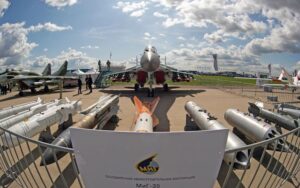By Lisa Vives, Global Information Network
NEW YORK (IDN) — While Africa has moved to center stage as a Russian foreign policy priority, questions are being raised about the record of human rights abuses by Russian mercenaries in Chad and the Central African Republic, among other countries.
United Nations investigators are examining allegations of atrocities outlined in a report for the UN Security Council that was obtained by the New York Times.
The report details alleged abuses by Russian mercenaries in the Central African Republic, a mineral-rich country that has been locked in civil war for nearly a decade.
Abuses by the Russians and allied government troops “included cases of excessive force, indiscriminate killings, occupation of schools and looting on a large scale, including of humanitarian organization,” according to the investigators using photographic evidence and confidential accounts by witnesses and local officials.
In 2017, the Kremlin offered to send unarmed military trainers to help train the local army in a mission endorsed by the United Nations—an exception to the arms embargo on that country since 2013.
Russians are playing an ever-large role in Central African politics and security, according to the Times. Russian bodyguards protect President Faustin-Archange Touadera and a former Russian spy has served as his security advisor.
The UN report will be released this week. It covers abuses that occurred during a period of chaos in the country with a newly formed rebel alliance attempting to disrupt election followed by a military offensive on the capital, Bangui.
Members of the rebel alliance allegedly recruited child soldiers by force, looted aid groups and sexually assaulted women, according to the report.
Last year, the presence of hundreds of Russian mercenaries was documented in a leaded UN report.
The Russian private military contractor Wagner is alleged to be operating across the African continent and to have strong links to senior officials in Moscow.
In 2017-18, Russia had weapons deals with Angola, Nigeria, Sudan, Mali, Burkina Faso and Equatorial Guinea. These included fighter jets, combat and transport helicopters, anti-tank missiles and engines for fighter planes.
However, the US continues to be the top arms exporter—increasing its global share of arms exports to 37% during the last five years, the BBC has reported. Russia, on the other hand, has lost its weapons market share by 22% and faces strong competition from the U.S. in most regions, according to researchers with the Stockholm International Peace Research Institute (Sipri). [IDN-InDepthNews – 30 June 2021]
Photo credit: Bai Xueqi / Xinhua


